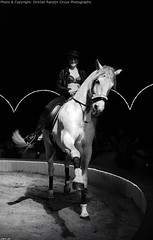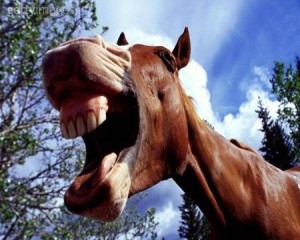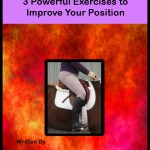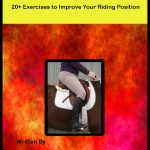Horse Training, Make Progress with Your Horse Training
Make progress with your horse Training.

![]() photo credit: dirkjanranzijn
photo credit: dirkjanranzijn
How do we as riders get a 1000lbs horse to jump jumps , canter and halt on command. If you can understand their personality and psychology it will help you with your training. We hold the key to the power and leverage to make horses do what we want by a simple squeeze, voice or rein.
You have to remember they cannot reason like you and I can. Once you understand and develop a bond with your horse and reward him for trying they will be a willing partner.
Any training based on force, fear and punishment will result in dangerous horses and bad riding.
Reward Your Horse
I believe in positive training methods and rewarding horses and trainers for a job well done. Taking short cuts with gimmicks and harsh treatments aren’t our style. When you reward your horse for trying, they will be more willing to try again.
Here is my 5 step training system:
Horse Training Step 0 – They didn’t try

This is the first step in all horse training. As if you had a green horse and they are not paying attention or acknowleding you are doing something. When you ask or cue them and they don’t respond. More than likely they just plain don’t know what to do. Don’t despair keep trying and get their attention by talking or by patting them.
Horse Training Step 1 – They tried something but didn’t do it
For example asking them to reinback and they shift their weight backwards. This is an important step to acknowledge. In their minds they are doing something. As riders starting our horse training, we must reward and accept their ability to ‘guess’ the right thing. A Simple ‘good’ or a scratch on the neck is necessary. AND the all important reward ~ Stop asking them to do what ever it is they were doing ~ Let them stand quietly.
Horse Training Step 2 – They tried something but is was the wrong thing
To me this is the the most important step. If we as riders and trainers do not acknowledge our horses for remotely trying we will not progress. An example would be if you asked your horse to reinback but they went forward instead. This step is important and acknowledging the horse is very important. they must know and be acknowledged for trying. It can be as simple as a scratch on the neck or ‘good’.
Horse Training Step 3 – They did it but rushed and were worried about it
And not linking the request with the movement, for example rushing backward without thinking. This is the reactive stage. The reward at this stage should be greater than you think . Lots of ‘good’, scratches and stop asking for the reinback as soon as the horse;s feet start to move.
Horse Training Step 4 – They performed movement with errors
At this stage we can, as horse riders and trainers, start to perfect the movement. This stage the horse should understand the link between request and what is required and makes the performance with errors, for example rein back but stops and shuffles at times, or goes crooked. Reward with lots of scratches/pats and stop asking for the movement and let the horse stand quietly.
Horse Training Step 5 – They performed movement beautifully
When horse training, if you reward your horse accordingly you will be further ahead then not have any reward at all.
How do you reward your horse for a job well done?
 Try these three powerful exercises to get strengthen your position.
Try these three powerful exercises to get strengthen your position.

I like how simply you put this. Sometimes when I’m working with youngsters and trying to explain to people how this all works I just can’t do it. I sound like a bumbling idiot, when really I’m only kind of an idiot, just not gifted at telling people how to train. It’s a true gift to instinctively know these things and to also be able to put it in simple terms anyone can understand. I also really appreciate that you are promoting positive training. After coming from the racehorse world and the not so nice side of showjumping (as a groom, if I ride I’m a barrel racer at heart, in a full cheek snaffle and I start my barrel horses as I would a dressage horse), it’s so nice to see someone promoting gentle and effective techniques.
Jes…
Thank you so much for these kind words. I have seen my share of naughty horses and ‘bad actors’. I think that these types of situations can be avoided if we take a moment and listen to the horse. Their best guess is their starting place. As soon as I started to understand this I realized how important it is in my own life. If we continually get bombarded with negativity we all soon give up. So imagine a creature which can only guess what we want.
Thank you,
Laura
Laura –
lovely to hear from a ‘like mind’
(inc. the poster above)
as you both say…
so many assume a horse is ‘being naughty’
when he is just confused and doesn’t understand…
(and is it surprising – seeing as so many ‘trainers’ treat their human pupils in a similar fashion!)
totally agree, the moment any creature (humans included) you are training shows the slightest move in the required direction,
smother them in praise
– as I say in my training…
you ‘only’ need to
‘walk a mile in his hooves…’
and suddenly everything becomes SO much clearer
very best regards – labruyere
just a little observation on your blog layout….
I found it quite difficult to ‘work out’ how to leave a comment on a post
expected their to be an option at end of text….?
Thank you so much for your kind words…
I really appreciate that I have reached out and found like minded people who can appreciate the quality of the creatures we are dealing with!
~Laura
I KNOW …. HOW the #$%#$#$^RGWE$^W# do I fix that?